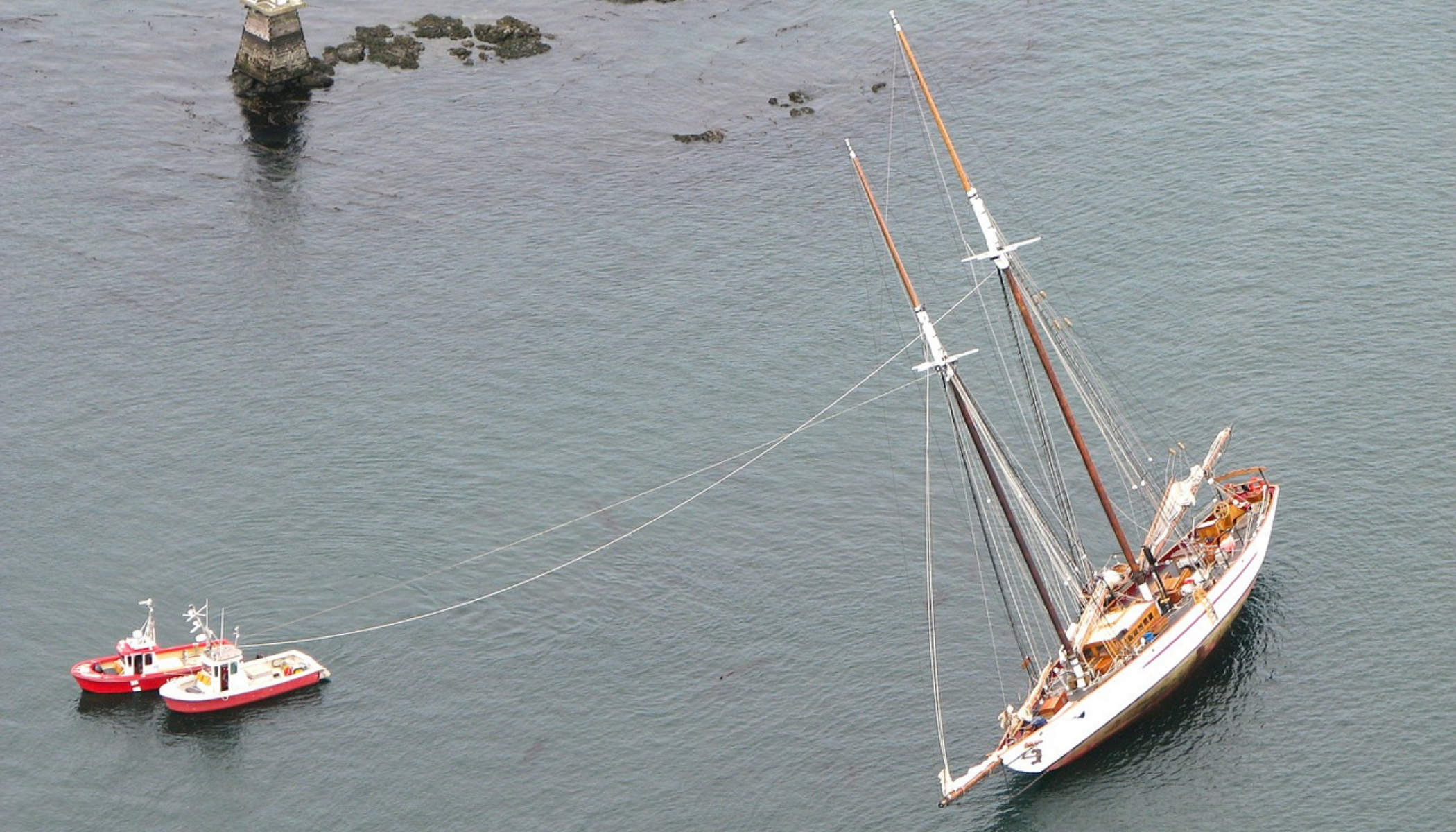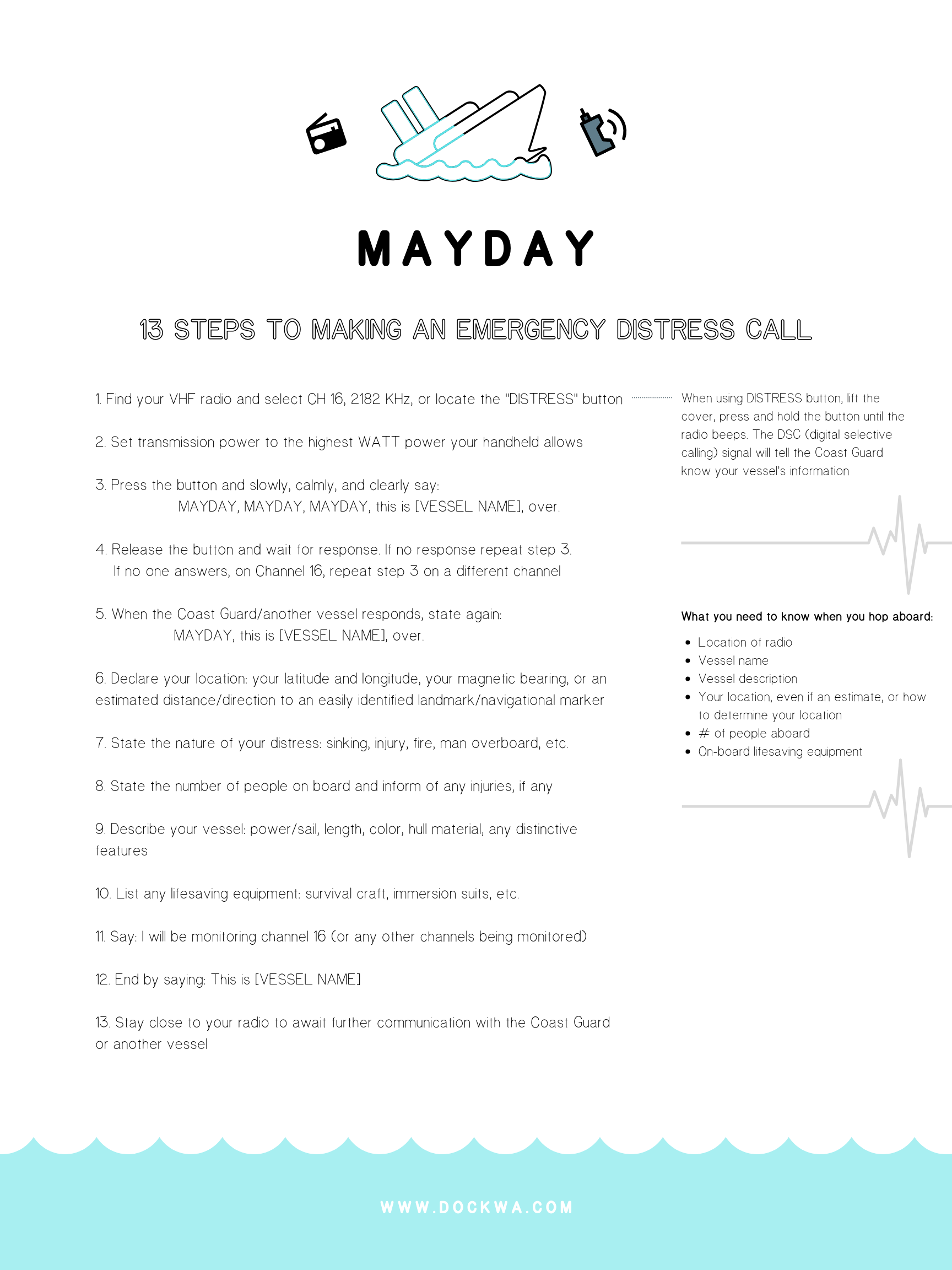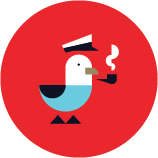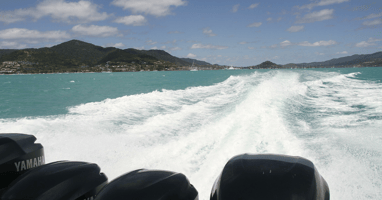1. Complete Your Profile With some apps, setting up your account can feel like a Mensa test. While we at Dockwa HQ know that our boaters...
What Does Mayday Mean? The History of Mayday and Other Boater Distress Calls
Post by Olivia Provencher-Hennedy - Published on 05/26/22 12:30 PM

A sure sign of spring in northern latitudes, mayday also happens to be the universal term to signal a life-threatening emergency. Read on for the story behind mayday and other boating distress calls.
Like learning about boating terminology? Brush up with this cheat-sheet.
What does "mayday" mean?
Mayday first appeared in the English language in 1923 and was most often used by boats and aircrafts. Credited with coining the term, Frederick Stanley Mackford, a Senior Radio Officer at Croydon Airport in London, was tasked with creating an easily understood distress signal.
At the time, the Croydon Airport most often communicated with the French Airport, Le Bourget. Stanley landed on mayday, the phonetic equivalent to m’aider, which in French means “help me,” or venez m’aider, “come help me." The United States adopted mayday as the official radiotelegraph distress signal in 1927. Always hailed three times, mayday is acknowledged globally.

What does "SOS" mean?
But what about "SOS?" Contrary to popular belief, SOS is not an acronym but rather a Morse code distress signal (... --- …). Initially, SOS was primarily used in telegraphic communications instead of radio communication and could be easily understood. Over the radio, however, it became difficult to distinguish the S in SOS. As a result, captains and pilots were forced to repeat themselves to clarify the signal. Mayday, a short and clear call, was the solution to the problem.

What does "Pan Pan" and "Securite" mean?
Other common distress signals originated from the French language as well. For example, PAN PAN (in French, panne) means “breakdown," and securite (in French, sécurité) means “safety.” PAN PAN refers to an urgent situation that, for the time being, does not pose an immediate threat to one’s life. Securite indicates a preface to a navigational safety concern such as an impending storm, debris in the water, or broken navigation lights.
What are the visual distress signals in boating?
In addition to the above, you may want to familiarize yourself with the agreed-upon visual cues for when a boat is in distress and needs help.
-
Orange Distress Flag: Ensure you've equipped your boat with an orange distress flag, which you'll find in most boating stores. The flag features a black square and circle (ball) side-by-side on an orange background. If possible, attach it to a paddle or something you can wave.
-
Electric Distress Lights: At night it's best to use an electric distress light or other illumination. The benefit of electric distress lights is they have a lower fire risk than flares and can be stored longer.
-
Flares or orange smoke: Flares are shot into the air, off the side of your boat, or handheld. Orange smoke can be held and waved. Both make for an unmistakable signal, especially at night. However, you'll want to pay attention to the expiration dates as the US Coast Guard recommends replacing your flares every 42 months of age.
You can see a full list of visual distress equipment over on BoatUS's site. BoatUS is a partner of Dockwa.
 We wish you fair winds and following seas, but if there does ever come a time when you need to hail mayday, know in advance what should follow the initial hail. Click the image to the left to download a PDF of step-by-step instructions for making a distress call.
We wish you fair winds and following seas, but if there does ever come a time when you need to hail mayday, know in advance what should follow the initial hail. Click the image to the left to download a PDF of step-by-step instructions for making a distress call.
What other boating terms would you like to know more about? Let us know; email marketing@dockwa.com or post to our Facebook Group.
This post was originally published in 2019 and updated in 2021 with additional information.





